If you’re planning a trip to Chengdu, a visit to Mount Qingcheng (青城山)should be on your itinerary. Known as one of the birthplaces of Taoism, Mount Qingcheng offers breathtaking natural scenery, rich cultural history, and tranquil hiking trails. This complete guide will show you everything you need to know about how to visit Mount Qingcheng, from getting there to exploring the best attractions.
1. Why Visit Mount Qingcheng?
Mount Qingcheng, also known as Qingcheng Shan or Qingcheng Mountain, is one of the most important Taoist sites in China. Its lush green forests, peaceful temples, and stunning views make it a perfect day trip from Chengdu. In 2000, UNESCO recognized Mount Qingcheng coupled with Dujiangyan Irrigation System as a World Heritage Site due to its cultural and natural significance.
Not only will you explore sacred Taoist temples, but you’ll also enjoy hiking in a serene environment, surrounded by nature. Whether you’re a history lover, hiker, or simply seeking a peaceful escape, Mount Qingcheng offers something for everyone.
2. How to Get to Mount Qingcheng from Chengdu
Getting to Mount Qingcheng from Chengdu is quite convenient. The mountain is located about 70 kilometers (43 miles) from Chengdu, and there are several transportation options available:
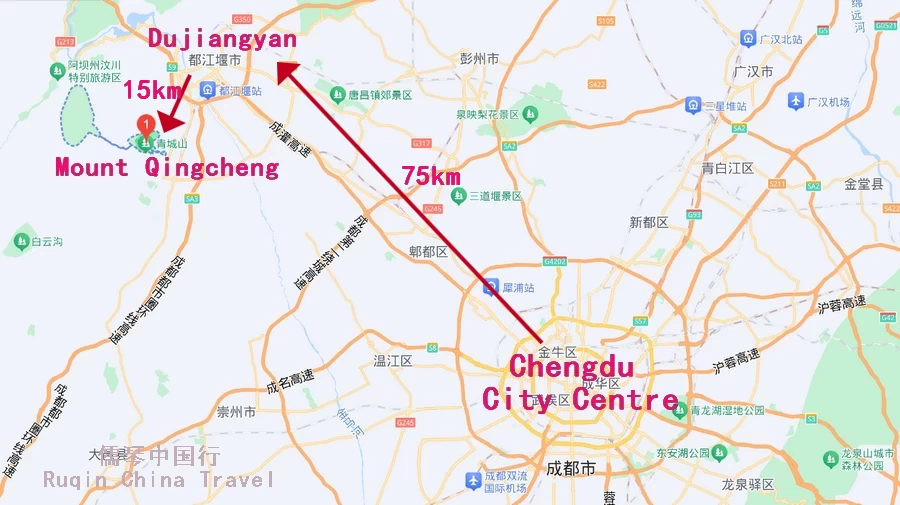
By Train
Taking the train is one of the fastest and most efficient ways to reach Mount Qingcheng. You can board a high-speed train from Chengdu’s Xipu Station or Chengdu East Railway Station. The journey takes around 30-45 minutes. Once you arrive at Qingchengshan Railway Station, you can take a short bus ride or taxi to the mountain’s entrance.
By Bus
Alternatively, you can take a direct bus from Chengdu’s Xinnanmen Bus Station to Mount Qingcheng. The bus ride takes around 1.5 to 2 hours. Although the bus is slower than the train, it may be a good option if you prefer a more relaxed ride.
By Taxi or Private Car
For travelers seeking more convenience, hiring a taxi or private car is an option. While this will be the most expensive method, it allows for more flexibility with timing and itinerary. The drive from Chengdu to Mount Qingcheng typically takes about 1.5 hours, depending on traffic.
3. Best Time to Visit Mount Qingcheng
The best time to visit Mount Qingcheng is during the spring (March to May) or autumn (September to November) when the weather is mild, and the landscape is lush with greenery. These seasons provide perfect hiking conditions and stunning views of the mist-covered mountains.
Summer (June to August) can be hot and humid, but the mountain’s higher altitude means it remains cooler than Chengdu. However, be prepared for possible rain. Winter (December to February) is less crowded, but it can be chilly, especially at higher elevations.
4. Mount Qingcheng Entrance Fees and Opening Hours
When planning your visit, it’s essential to know the entrance fees and opening hours. There are two main sections of Mount Qingcheng: the Front Mountain and the Back Mountain.
Front Mountain: This area is more popular and home to many of the temples and cultural sites. The entrance fee is around 90 RMB
Back Mountain: Known for its hiking trails and natural beauty, the entrance fee is approximately 20 RMB
Opening Hours
Mount Qingcheng opens daily from 8:00 AM to 6:00 PM. To make the most of your trip, it’s best to arrive early, especially during weekends or holidays when it can be more crowded.
5. Things to Do at Mount Qingcheng
Mount Qingcheng is divided into the Front Mountain and Back Mountain. The Front Mountain is the main part of the scenic area, covering about 15 square kilometers. It offers beautiful scenery and many historical sites. Key attractions include Jianfu Palace (建福宫), Natural Painting (天然图画), Tianshi Cave (天师洞), Chaoyang Cave (朝阳洞), Zushi Hall (祖师殿), and Shangqing Palace (上清宫).
In contrast, the Back Mountain is much larger, covering 100 square kilometers. It features stunning waters, dense forests, and towering peaks. In winter, it feels extremely cold, while summer brings cool, refreshing air. Major sights here include Jinbi Tiancang (金壁天仓),Mist Pond (三潭雾泉), Baiyun Caves (白云群洞), and the spectacular Tianqiao Bridge (天桥奇景).
There are plenty of things to do at Mount Qingcheng, whether you’re interested in culture, nature, or adventure. Here are the top activities to add to your Mount Qingcheng itinerary:
Explore Taoist Temples
Mount Qingcheng is home to several Taoist temples, each with unique architecture and history. The Tianshi Cave (天师洞)and Jianfu Palace (建福宫)are must-see temples located on the Front Mountain. These temples are tranquil places where you can learn about Taoist practices and history.
Take a Scenic Hike
Hiking is one of the best ways to experience Mount Qingcheng’s beauty. The Front Mountain offers more structured paths and easier access to cultural sites, while the Back Mountain is less developed and perfect for nature lovers looking for a more rugged adventure. There are multiple Mount Qingcheng hiking trails, ranging from easy walks to more challenging routes for experienced hikers.
Ride the Cable Car
To save time and energy, you can take a cable car from Yuecheng Lake to the Upper Mountain. The ride provides stunning views over the landscape and takes you close to the summit, making it a great option if you’re short on time.
Visit Yuecheng Lake (月城湖)
Before heading up the mountain, stop by Yuecheng Lake at the base. You can take a boat ride across the lake, which offers beautiful views of the surrounding forest. This is a peaceful spot to relax and enjoy nature before your hike.
6. Mount Qingcheng vs. Mount Emei
If you’re torn between visiting Mount Qingcheng and Mount Emei, here’s a quick comparison:
Mount Qingcheng is smaller, quieter, and ideal for those looking for a peaceful day trip with less strenuous hiking. It’s also more focused on Taoist culture.
Mount Emei, on the other hand, is larger, more challenging to hike, and famous for its Buddhist monasteries. If you’re looking for a more adventurous hike with spectacular views, Mount Emei might be a better fit.
However, both mountains are UNESCO World Heritage sites and worth visiting if you have the time.
7. Where to Stay Near Mount Qingcheng
For those who want to spend more time at Mount Qingcheng, staying overnight near the mountain is an excellent option. There are several accommodation choices, ranging from budget guesthouses to luxury resorts.
Qingcheng Mountain Resort: This is a comfortable option located close to the entrance of the mountain, offering convenient access and modern amenities.
Six Senses Qing Cheng Mountain: A luxurious resort offering beautiful views and a relaxing environment. Perfect for travelers who want a more comfortable stay after a day of exploring.
For a more budget-friendly option, there are also plenty of local guesthouses around the area.
8. Must-See Spots on Mount Qingcheng
While there are many beautiful spots on Mount Qingcheng, here are a few must-visit locations:
Laojun Pavilion (老君阁): Situated at the top of the Front Mountain, this pavilion offers panoramic views of the entire area. It’s a great spot for photography.
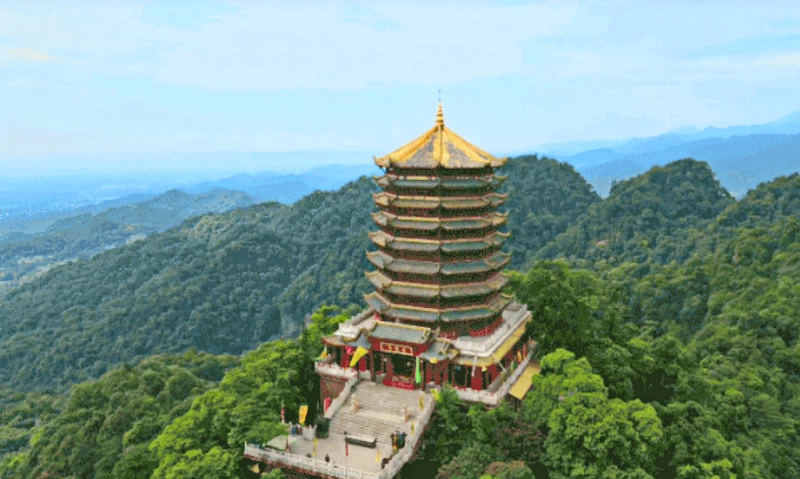
Shangqing Palace (上清宫): One of the oldest and most important Taoist temples on the mountain. The temple is surrounded by lush greenery, creating a serene atmosphere.
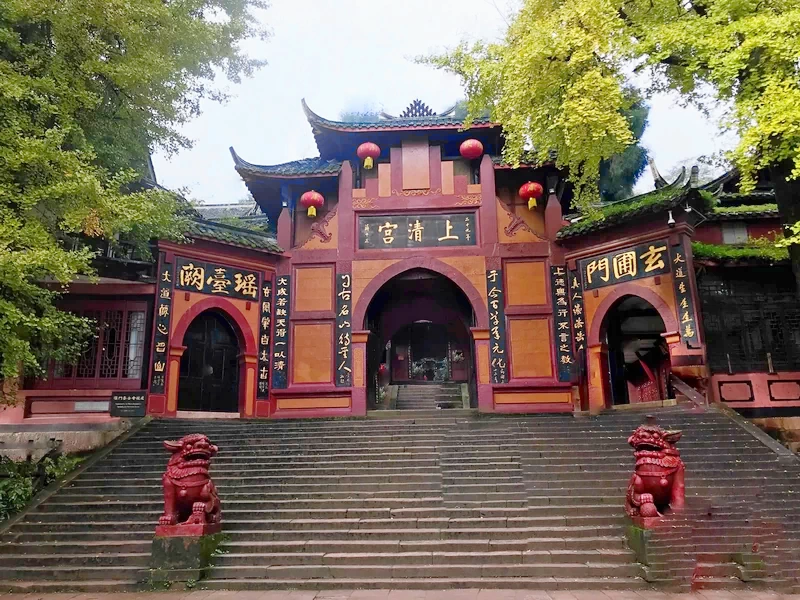
Yuecheng Lake (月城湖): As mentioned earlier, this picturesque lake is a perfect spot to relax and enjoy the scenery before or after your hike.
9. Cultural Significance of Mount Qingcheng
Mount Qingcheng holds immense cultural significance as the birthplace of Taoism, one of China’s most influential philosophical and religious traditions. The mountain’s temples and palaces have been Taoist pilgrimage sites for centuries, and its spiritual importance remains strong today.
When visiting Mount Qingcheng, take time to learn about Taoist principles such as harmony with nature, simplicity, and balance. You’ll see these ideas reflected in the architecture and design of the mountain’s temples and sacred sites.
10. Photography Spots
For photographers, Mount Qingcheng offers plenty of opportunities to capture stunning landscapes and cultural heritage. Some of the best spots for photos include:
Laojun Pavilion, which offers panoramic views of the mountains.
The serene Yuecheng Lake, surrounded by misty forests.
Any of the Taoist temples, such as Tianshi Cave or Shangqing Palace, which offer unique cultural shots.
The mountain’s natural beauty, combined with its historical architecture, makes it a perfect destination for photography enthusiasts.
11. Mount Qingcheng for Beginners
If you’re a first-time visitor or not an experienced hiker, don’t worry! Mount Qingcheng is accessible for beginners. The Front Mountain has well-maintained paths, and the cable car makes reaching the higher sections easy. You can take your time, explore the temples, and enjoy the scenic views at your own pace.
Additionally, there are plenty of rest areas along the way, so you can relax and take in the beauty of the surroundings. For those with more energy, the Back Mountain offers more challenging trails and a more immersive natural experience.
12. Day Trip from Chengdu
Many visitors choose to visit Mount Qingcheng as a day trip from Chengdu, or coupled with the visit to Dujiangyan Irrigation System since the two are only km 15 apart. Given its close proximity, it’s entirely feasible to explore the mountain in one day and return to Chengdu by evening. Start your day early by catching a train or bus to maximize your time on the mountain. Spend your day visiting the Taoist temples, hiking the trails, and taking in the beautiful scenery before heading back to the city.
However, if you prefer a more relaxed pace, consider staying overnight near the mountain to explore more thoroughly.
13. Final Useful Travel Tips
Before your visit, here are a few additional tips to make your trip more enjoyable:
Wear comfortable shoes: The trails can be steep, so bring appropriate footwear for hiking.
Bring water and snacks: There are a few small shops, but it’s a good idea to carry your own supplies.
Check the weather: Be prepared for rain, especially in summer, and bring a rain jacket if needed.
Start early: The earlier you start, the more you’ll be able to avoid the crowds.
By following these tips and planning ahead, you’ll have a wonderful experience at Mount Qingcheng.
Now you have a complete guide on how to visit Mount Qingcheng. Whether you’re interested in Taoist history, scenic hikes, or just a peaceful day in nature, Mount Qingcheng is an unforgettable destination that shouldn’t be missed during your trip to Chengdu.
More Chengdu Travel Guides
Plan your Chengdu Tour? Our “Chengdu Travel Guide“ section offers essential advice to help you navigate the city like a pro. Welcome to the Chengdu Travel Guide, your ultimate resource for exploring the vibrant heart of Sichuan Province. Known as the home of the giant pandas and the birthplace of spicy Sichuan cuisine, Chengdu is a city where ancient traditions meet modern life.

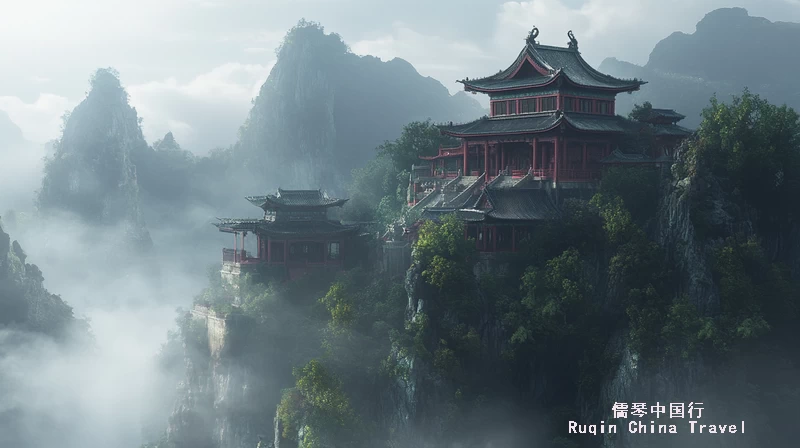
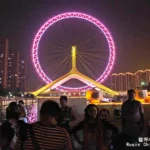
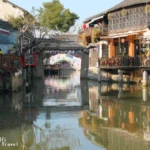
Hi,
My name is Bob. I’m emailing because I would like to set up a tour to both Mount Qingcheng and the Dujiangyan Irrigation System. I would like to visit both of those places during the week of July 21, 2025. Do you have any availability then? I look forward to hearing back from someone soon.
Thank You,
Bob Ross
——————————–
Hi Bob,
Thank you for reaching out!
While Ruqin China Travel is not a travel agency, we’ve curated a selection of excellent tour recommendations in partnership with trusted platforms like Viator. You’ll find a variety of guided tours including Mount Qingcheng and the Dujiangyan Irrigation System, which is available during the week of July 21, 2025.
Please visit this link to explore and book your preferred option:
👉 Chengdu Tours recommended by Ruqin China Travel (https://www.viator.com/partner-shop/ruqin-china-travel-tours/Chengdu-Tours-recommended-by-R?medium=link&medium_version=shop)
We hope you have a wonderful time exploring these fascinating UNESCO World Heritage sites! If you have any questions or need more travel tips, feel free to get in touch.
Best regards,
Daniel
Ruqin China Travel
http://www.ruqintravel.com